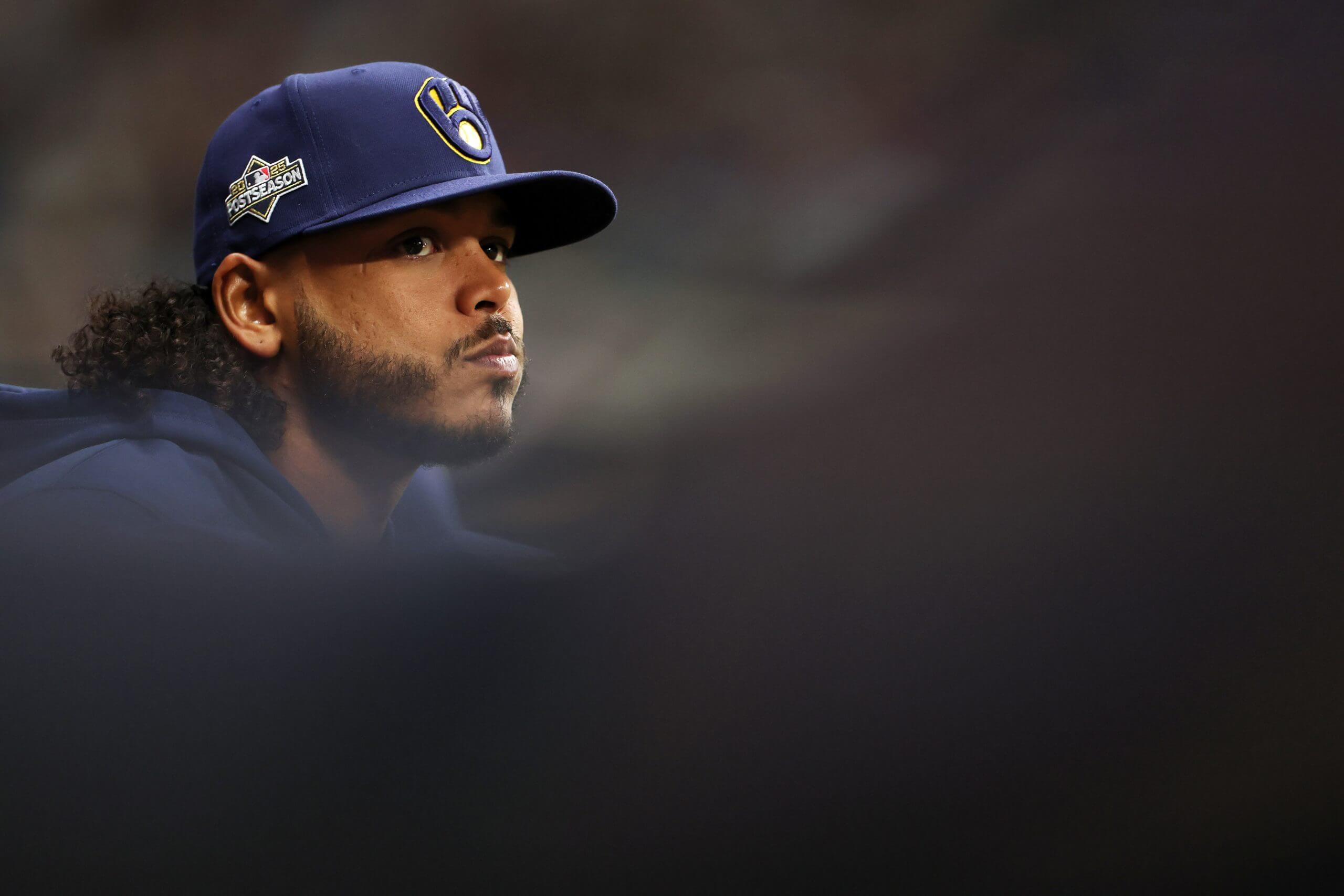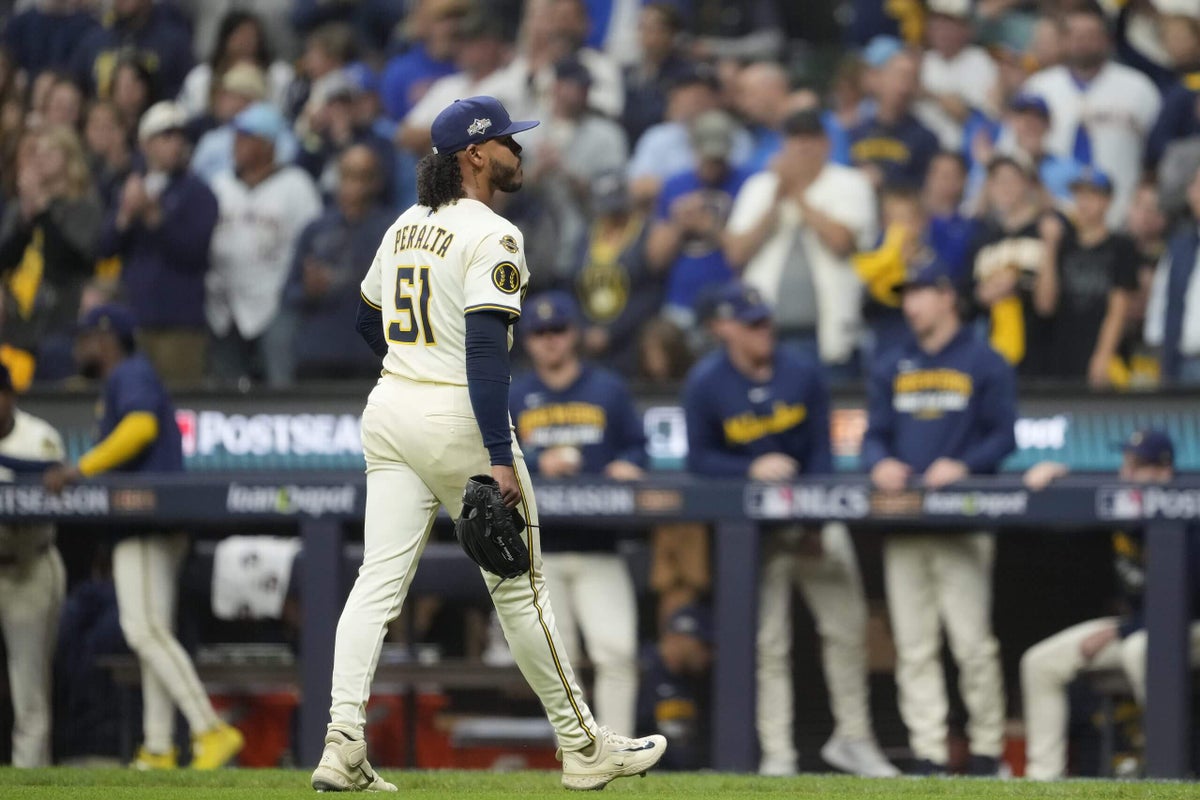LOS ANGELES — In the wake of the Milwaukee Brewers being swept by the Los Angeles Dodgers in the National League Championship Series, which culminated in a 5-1 Game 4 defeat that demonstrated the gap between the “Average Joes” and their better-financed foes, the team must now engage in what has become a different but still painful rite of passage: deciding whether or not to trade an All-Star a year away from free agency.
In this case, as the winter unfolds, the Brewers are expected to at least field offers for starting pitcher Freddy Peralta, according to people familiar with the situation who requested anonymity in order to speak freely. Milwaukee holds an $8 million option for 2026 on Peralta, who went 17-6 with a 2.70 ERA and made his second All-Star team this season. The team can afford to retain Peralta, but will feel compelled to at least explore the market for his services, especially given the relative weakness of this class of free-agent pitchers.
The question will be if the Brewers treat Peralta like pitcher Corbin Burnes, who was dealt after the 2023 season, or shortstop Willy Adames, who reached free agency as a Brewer despite persistent trade rumors. For Milwaukee officials, the situation reflects the reality of sustained success in baseball’s smallest media market. The team won a franchise-record 97 games in 2025 despite carrying a bottom-third payroll. Owner Mark Attanasio is not expected to endorse significant spending. To stay competitive, Milwaukee may return to its offseason playbook.

Freddy Peralta has quietly been one of the more reliable pitchers in baseball in recent years. (Michael Reaves / Getty Images)
Rather than splash in the free-agent market, the Brewers have reloaded in recent years by trading pending free agents. Two winters ago, the Brewers shipped Burnes, a former National League Cy Young award winner, to Baltimore for a package that included current starting shortstop Joey Ortiz. A year later, the team moved closer Devin Williams to the New York Yankees for a return that included third baseman Caleb Durbin.
Like Burnes and Williams, Peralta will be one season away from the open market. But he will cost far less than Burnes, who earned more than $15 million in his final season of arbitration with Baltimore. And the Brewers view Peralta as far more valuable than a one-inning reliever like Williams.
Milwaukee could decide that Peralta, much like Adames, means too much to the roster to move. After Dansby Swanson signed a seven-year, $177 million contract with the Cubs heading into 2023, the Brewers lost hope of inking Adames to a long-term extension. There was chatter about trading him, especially after the Burnes deal. In the end, the Brewers stood pat with Adames. He helped the club win 93 games and another National League Central title in 2024, then departed for a seven-year, $182 million contract with San Francisco.
Peralta could fit a similar role on the 2026 Brewers. The team will bring back all of its positional starters. The rotation features more holes. The team will likely decline options on starters Jose Quintana and Brandon Woodruff. Peralta would serve as a safety net while the team creates lanes for youngsters like Jacob Misiorowski, Robert Gasser, Logan Henderson and Chad Patrick.
Peralta has quietly been one of the more reliable pitchers in baseball in recent years. He has made 30 starts in each of the past three seasons. This was the best year of his career. Which, of course, is why other clubs would be interested in him, especially given the dearth of top-level free-agent pitchers.
Consider how Peralta’s numbers during the past three seasons compare to the top free agents:
Dylan Cease: 29-32, 4.18 ERA, 534 1/3 IP, 11.0 K/9, 102 ERA+, 3.45 FIP
Zac Gallen: 44-30, 3.99 ERA, 550 IP, 9.0 K/9, 108 ERA+, 3.73 FIP
Michael King: 22-20, 2.99 ERA, 351 2/3 IP, 10.3 K/9, 141 ERA+, 3.50 FIP
Framber Valdez: 40-29, 3.35 ERA, 566 1/3 IP, 8.8 K/9, 124 ERA+, 3.38 FIP
Peralta: 40-25, 3.40 ERA, 516 IP, 10.7 K/9, 123 ERA+, 3.88 FIP
Cease and Gallen put up disappointing platform seasons. King, a converted reliever, made only 15 starts and failed to dispel concerns about his long-term health. Valdez combusted in August and September as the Houston Astros missed the postseason for the first time since 2016. There are reasons to worry about a long-term commitment for every free agent. The market may be further slowed by the uncertainty wrought by the expected lockout after the 2026 season.
So a team may be more willing to give up players for Peralta than shell out money for someone else. Last winter, the Chicago Cubs were willing to trade top prospect Cam Smith and former All-Star infielder Isaac Paredes for one season of outfielder Kyle Tucker. Could Milwaukee fetch a similar package for one season of Peralta? The club must at least inspect the market to find out.
Yet the strength of the current roster gives the team significant leverage. The farm system is considered to be strong, with shortstop Jesús Made rated the fifth-best prospect in the game and catcher Jeferson Quero at No. 16 in The Athletic’s most recent rankings. Milwaukee will receive some financial flexibility with the expiration of first baseman Rhys Hoskins’ contract. He earned $18 million in 2025, the second-highest salary on the team, but was left off the postseason roster after being overtaken in the lineup by midseason addition Andrew Vaughn. But the money saved with Hoskins’ departure will be spent elsewhere: Vaughn will receive a raise in arbitration, as will several other Brewers. Woodruff will receive a $10 million buyout if the club declines his $20 million option; Quintana will receive $2 million if the team declines his $15 million option.
For the Brewers, Peralta represents an organizational triumph. The team acquired him in 2015 from Seattle as part of a package for utility man Adam Lind. Peralta was a teenager who had never pitched above rookie-level baseball. He jetted through the Brewers system and debuted in the majors at 21. Three years later, Peralta became a mainstay in the rotation, the understudy to Burnes and Woodruff.
This past spring, with Burnes long gone and Woodruff recovering from shoulder surgery, Brewers manager Pat Murphy called Peralta into his office. He explained the responsibility of a No. 1 starter: “You’re the guy,” Murphy told Peralta.
“The ace has to post,” Murphy said before Game 2 of this series. “And that’s what Freddy does best. He posts.”
That is why the Brewers, who intend to compete once more in 2026, could hang onto Peralta for one more season before free agency. But it’s also why a variety of other teams will come calling for his services this winter.

